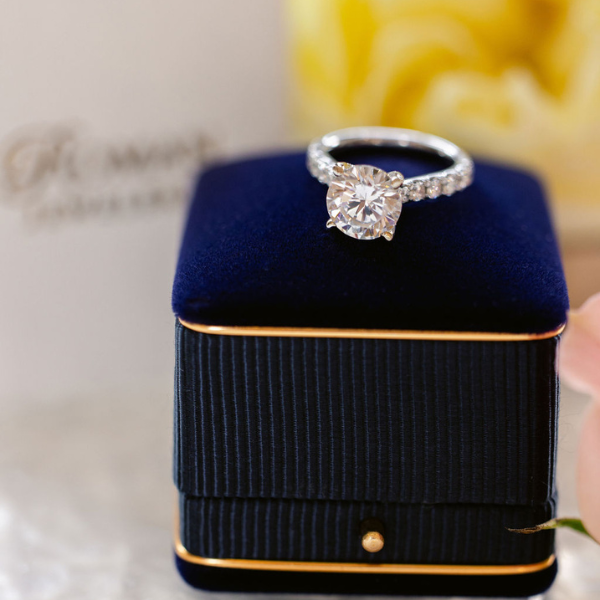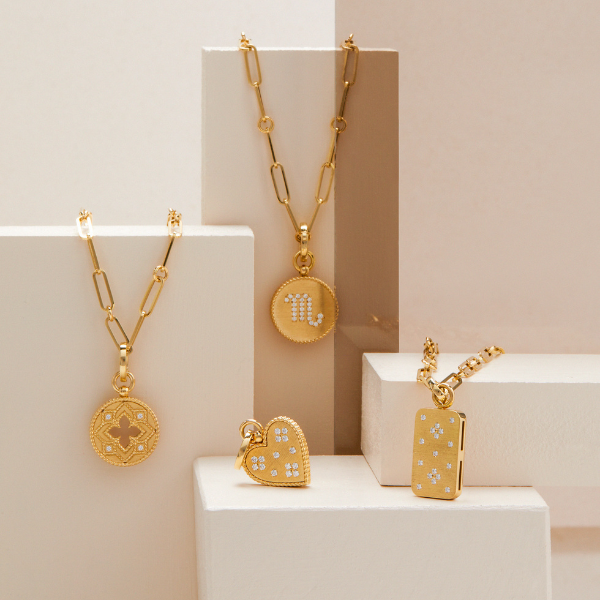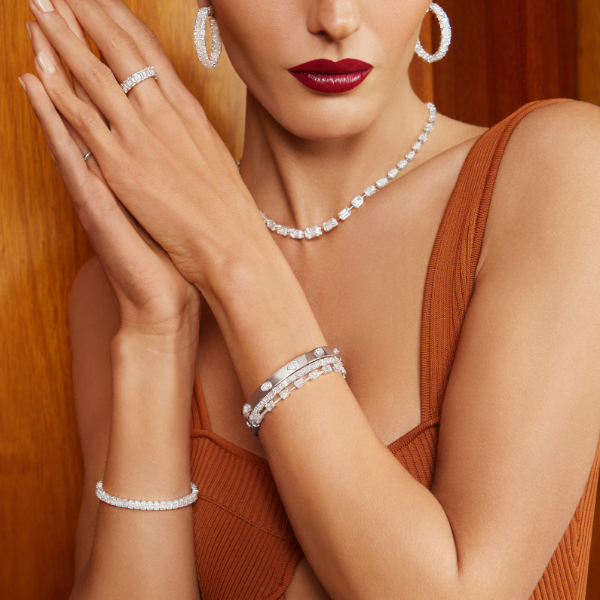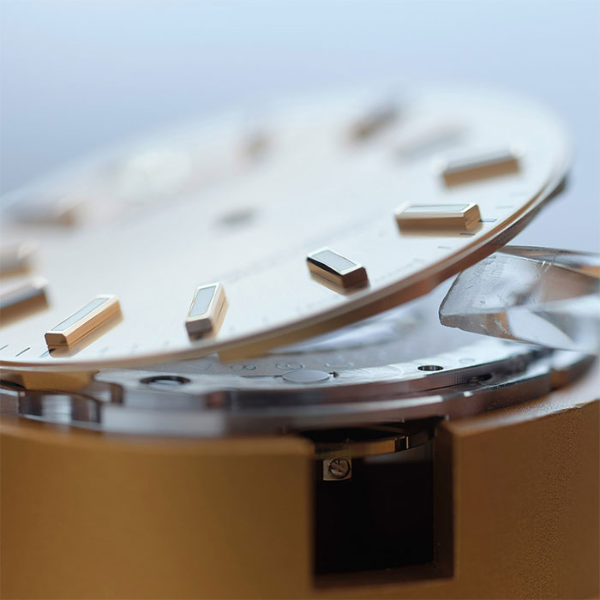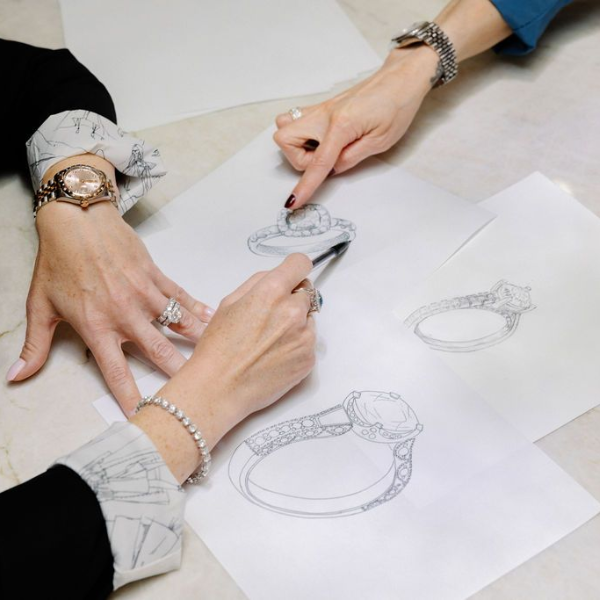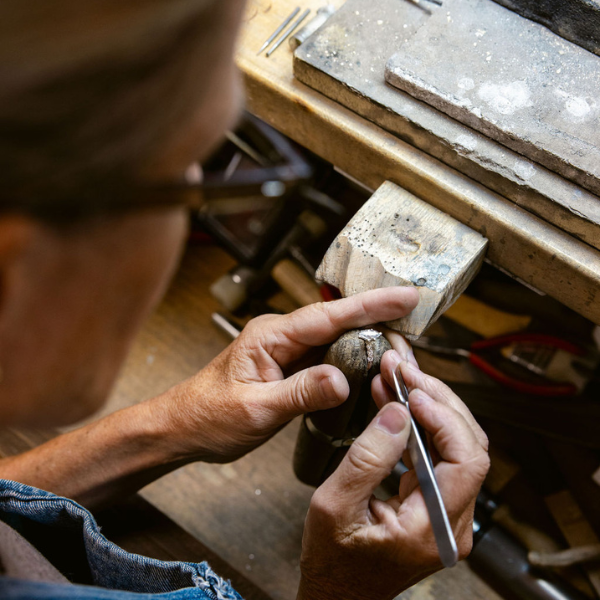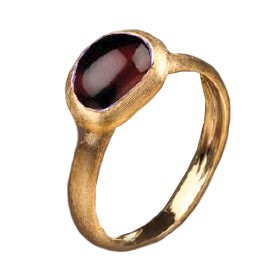 This red garnet ring is designed by Marco Bicego and available at Roman Jewelers As Aquarius Zodiac stone and the second wedding anniversary gem, garnet provides a versatile family of affordable gems that can be enjoyed year-round. But, probably, the garnet is known mostly as January’s birthstone. Garnet is actually the group name for a family of gemstones that come in almost every color. They're beautiful, durable, and most garnets are very affordable. The name "garnet" comes from the Roman word granatus meaning "seed," and the gems were thought to resemble pomegranate seeds. The most common garnets are the red to red-brown, and red garnets are known to show as much fire as rubies. Until the 18th century, red garnets were often worn by soldiers to heal wounds and stop blood flow. They were also said to promote true love, warn of danger by changing color, and protect the wearer's home from fire and lightning. Garnets in yellow, brown and orange, were believed to stimulate energy and promote compatibility in lovers. For those who love greens, tsavorite garnet from Africa comes in clear light greens to rich dark greens and is more affordable than fine emeralds. Yellow-green to mid-green garnet is mostly found in antique jewelry. A translucent green garnet, misnamed "Transvaal Jade," looks like light to medium milky green jade with tiny black spots. Called hydrogrossular garnet, it has often been used as an affordable jade substitute. Mothers in medieval Europe used to hang this garnet above their baby's cradle for good health and sweet dreams. Green gemstones were also said to bring prosperity, calm the nerves, and protect wearers from emotional stress. The pink to reddish purple colors are in rhodolite garnet, the largest transparent species. The lighter, sparkling bright pinks can resemble pink sapphires. They were believed to attract romance and cure broken hearts. Though garnets are hard, like all gemstones, special care must be taken, as some varieties can chip. For jewels worn often, like rings, look for settings that protect the gem with metal, like the one shown from Marco Bicego. Also avoid steaming, abrupt temperature changes, and acids, because they might damage gems. Ultrasound or warm water with mild detergent are recommended for cleaning.
This red garnet ring is designed by Marco Bicego and available at Roman Jewelers As Aquarius Zodiac stone and the second wedding anniversary gem, garnet provides a versatile family of affordable gems that can be enjoyed year-round. But, probably, the garnet is known mostly as January’s birthstone. Garnet is actually the group name for a family of gemstones that come in almost every color. They're beautiful, durable, and most garnets are very affordable. The name "garnet" comes from the Roman word granatus meaning "seed," and the gems were thought to resemble pomegranate seeds. The most common garnets are the red to red-brown, and red garnets are known to show as much fire as rubies. Until the 18th century, red garnets were often worn by soldiers to heal wounds and stop blood flow. They were also said to promote true love, warn of danger by changing color, and protect the wearer's home from fire and lightning. Garnets in yellow, brown and orange, were believed to stimulate energy and promote compatibility in lovers. For those who love greens, tsavorite garnet from Africa comes in clear light greens to rich dark greens and is more affordable than fine emeralds. Yellow-green to mid-green garnet is mostly found in antique jewelry. A translucent green garnet, misnamed "Transvaal Jade," looks like light to medium milky green jade with tiny black spots. Called hydrogrossular garnet, it has often been used as an affordable jade substitute. Mothers in medieval Europe used to hang this garnet above their baby's cradle for good health and sweet dreams. Green gemstones were also said to bring prosperity, calm the nerves, and protect wearers from emotional stress. The pink to reddish purple colors are in rhodolite garnet, the largest transparent species. The lighter, sparkling bright pinks can resemble pink sapphires. They were believed to attract romance and cure broken hearts. Though garnets are hard, like all gemstones, special care must be taken, as some varieties can chip. For jewels worn often, like rings, look for settings that protect the gem with metal, like the one shown from Marco Bicego. Also avoid steaming, abrupt temperature changes, and acids, because they might damage gems. Ultrasound or warm water with mild detergent are recommended for cleaning.Give A Garnet In January
By: Admin
Jan 18,2011
 This red garnet ring is designed by Marco Bicego and available at Roman Jewelers As Aquarius Zodiac stone and the second wedding anniversary gem, garnet provides a versatile family of affordable gems that can be enjoyed year-round. But, probably, the garnet is known mostly as January’s birthstone. Garnet is actually the group name for a family of gemstones that come in almost every color. They're beautiful, durable, and most garnets are very affordable. The name "garnet" comes from the Roman word granatus meaning "seed," and the gems were thought to resemble pomegranate seeds. The most common garnets are the red to red-brown, and red garnets are known to show as much fire as rubies. Until the 18th century, red garnets were often worn by soldiers to heal wounds and stop blood flow. They were also said to promote true love, warn of danger by changing color, and protect the wearer's home from fire and lightning. Garnets in yellow, brown and orange, were believed to stimulate energy and promote compatibility in lovers. For those who love greens, tsavorite garnet from Africa comes in clear light greens to rich dark greens and is more affordable than fine emeralds. Yellow-green to mid-green garnet is mostly found in antique jewelry. A translucent green garnet, misnamed "Transvaal Jade," looks like light to medium milky green jade with tiny black spots. Called hydrogrossular garnet, it has often been used as an affordable jade substitute. Mothers in medieval Europe used to hang this garnet above their baby's cradle for good health and sweet dreams. Green gemstones were also said to bring prosperity, calm the nerves, and protect wearers from emotional stress. The pink to reddish purple colors are in rhodolite garnet, the largest transparent species. The lighter, sparkling bright pinks can resemble pink sapphires. They were believed to attract romance and cure broken hearts. Though garnets are hard, like all gemstones, special care must be taken, as some varieties can chip. For jewels worn often, like rings, look for settings that protect the gem with metal, like the one shown from Marco Bicego. Also avoid steaming, abrupt temperature changes, and acids, because they might damage gems. Ultrasound or warm water with mild detergent are recommended for cleaning.
This red garnet ring is designed by Marco Bicego and available at Roman Jewelers As Aquarius Zodiac stone and the second wedding anniversary gem, garnet provides a versatile family of affordable gems that can be enjoyed year-round. But, probably, the garnet is known mostly as January’s birthstone. Garnet is actually the group name for a family of gemstones that come in almost every color. They're beautiful, durable, and most garnets are very affordable. The name "garnet" comes from the Roman word granatus meaning "seed," and the gems were thought to resemble pomegranate seeds. The most common garnets are the red to red-brown, and red garnets are known to show as much fire as rubies. Until the 18th century, red garnets were often worn by soldiers to heal wounds and stop blood flow. They were also said to promote true love, warn of danger by changing color, and protect the wearer's home from fire and lightning. Garnets in yellow, brown and orange, were believed to stimulate energy and promote compatibility in lovers. For those who love greens, tsavorite garnet from Africa comes in clear light greens to rich dark greens and is more affordable than fine emeralds. Yellow-green to mid-green garnet is mostly found in antique jewelry. A translucent green garnet, misnamed "Transvaal Jade," looks like light to medium milky green jade with tiny black spots. Called hydrogrossular garnet, it has often been used as an affordable jade substitute. Mothers in medieval Europe used to hang this garnet above their baby's cradle for good health and sweet dreams. Green gemstones were also said to bring prosperity, calm the nerves, and protect wearers from emotional stress. The pink to reddish purple colors are in rhodolite garnet, the largest transparent species. The lighter, sparkling bright pinks can resemble pink sapphires. They were believed to attract romance and cure broken hearts. Though garnets are hard, like all gemstones, special care must be taken, as some varieties can chip. For jewels worn often, like rings, look for settings that protect the gem with metal, like the one shown from Marco Bicego. Also avoid steaming, abrupt temperature changes, and acids, because they might damage gems. Ultrasound or warm water with mild detergent are recommended for cleaning.








